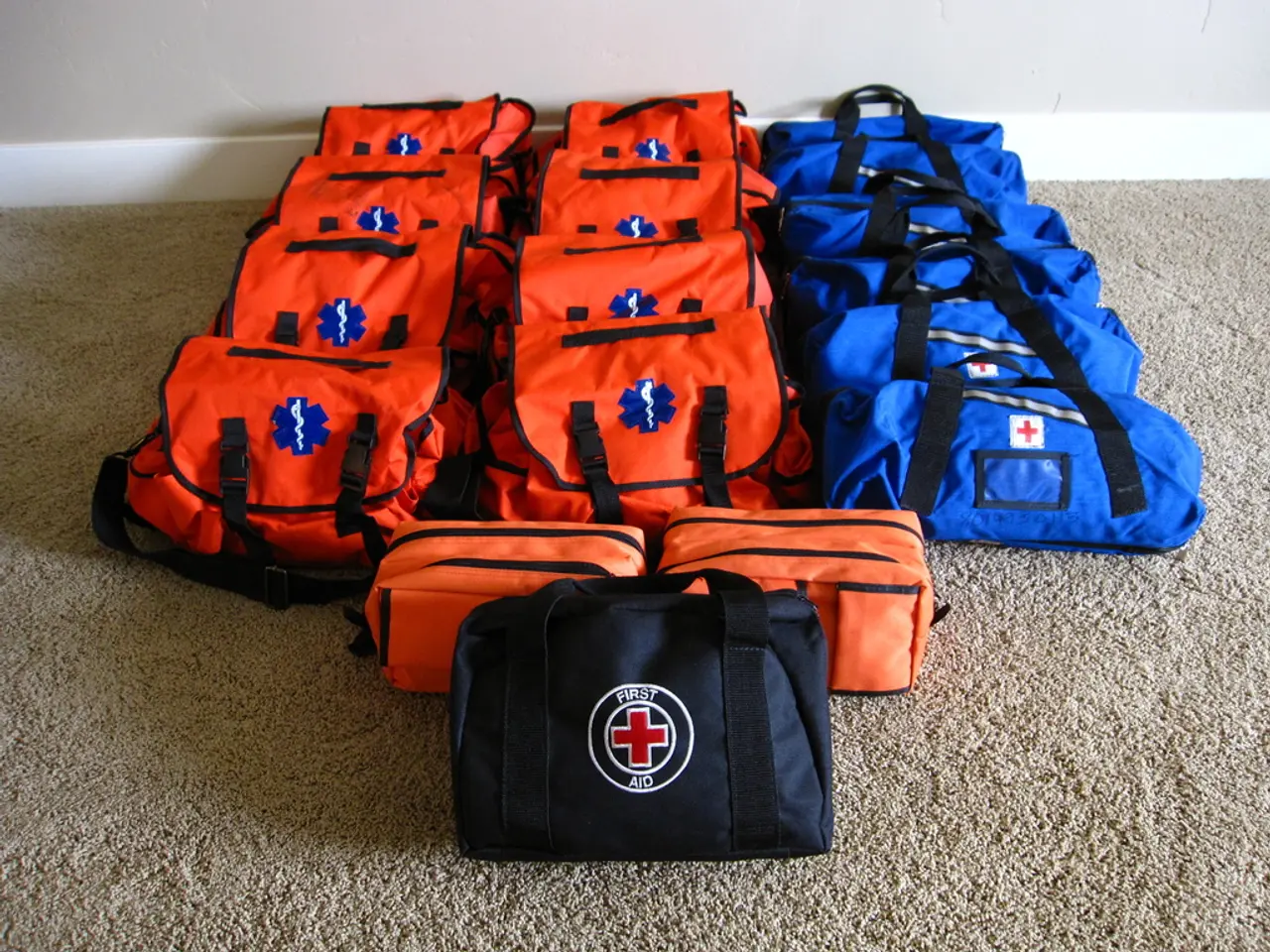How to React in the Event of a Heart Emergency
In the event of a heart attack, quick action is crucial to increase the chances of survival and limiting potential heart damage. Here are the recommended first aid steps to follow before professional help arrives.
1. **Call 911 Immediately**: The first action is to call emergency services to get professional medical help on the way as quickly as possible. Do not waste time trying to drive the person to the hospital yourself, as heart attacks can rapidly become life-threatening, requiring urgent medical intervention en route.
2. **Keep the Person Calm and Seated**: Help the person to sit down, rest, and stay calm to reduce strain on the heart. Reassure them that help is coming. If they have prescribed heart medication (like nitroglycerin), assist them in taking it as directed.
3. **Start CPR if Necessary**: If the person is unconscious or not breathing normally, begin chest compressions at a rate of 100–120 compressions per minute. If you are trained to do so, provide rescue breaths after every 30 compressions. Use an Automated External Defibrillator (AED) if available and follow device instructions.
4. **Use an AED if Available**: AEDs should only be used on someone in cardiac arrest, not for a heart attack. These devices can help restart a heart that has stopped beating.
5. **Stay with the Person**: Remain with them, monitor their condition, and follow instructions from emergency dispatch until professional help arrives.
It's essential to remember that heart attack symptoms include pressure or tightness in the chest, pain in the left side (arm, jaw, neck, or back), heartburn-like discomfort, cold sweats, shortness of breath, a sense of "impending doom," and symptoms that last for 10 minutes or more require emergency care.
Everybody is at risk of a heart attack, so if experiencing these symptoms, seek emergency care immediately. The faster action is taken, the better the chances of preventing long-term heart damage.
In the United States, research shows an increase in heart attacks for people under the age of 40, demonstrating that nobody is immune to a heart attack, and it can happen at any age.
By following these first aid steps, you can significantly increase the chances of survival and limit potential heart damage during a heart attack emergency. Stay calm, stay informed, and stay ready to act.
- Regular fitness and exercise can help maintain cardiovascular health and reduce the risk of chronic diseases, such as heart attacks.
- Mental health is equally important for overall health and wellness; managing stress through practices like meditation, yoga, or talking to a mental health professional can contribute to a better quality of life and potentially lower the risk of developing heart conditions.
- In the realm of science and medical research, advancements are being made to combat cancer and improve the treatment options available for various medical conditions, including heart disease.
- Beyond heart health, it's crucial to prioritize a healthy lifestyle by eating nutrient-rich foods, avoiding harmful substances, and staying updated on regular check-ups to detect and manage any emerging health concerns, such as chronic diseases.
- Encouraging sports and physical activities among children and adults can foster a lifelong commitment to maintaining fitness and exercise routines, which, in turn, supports overall health and reduces the risk of various chronic diseases, including cardiovascular diseases.




